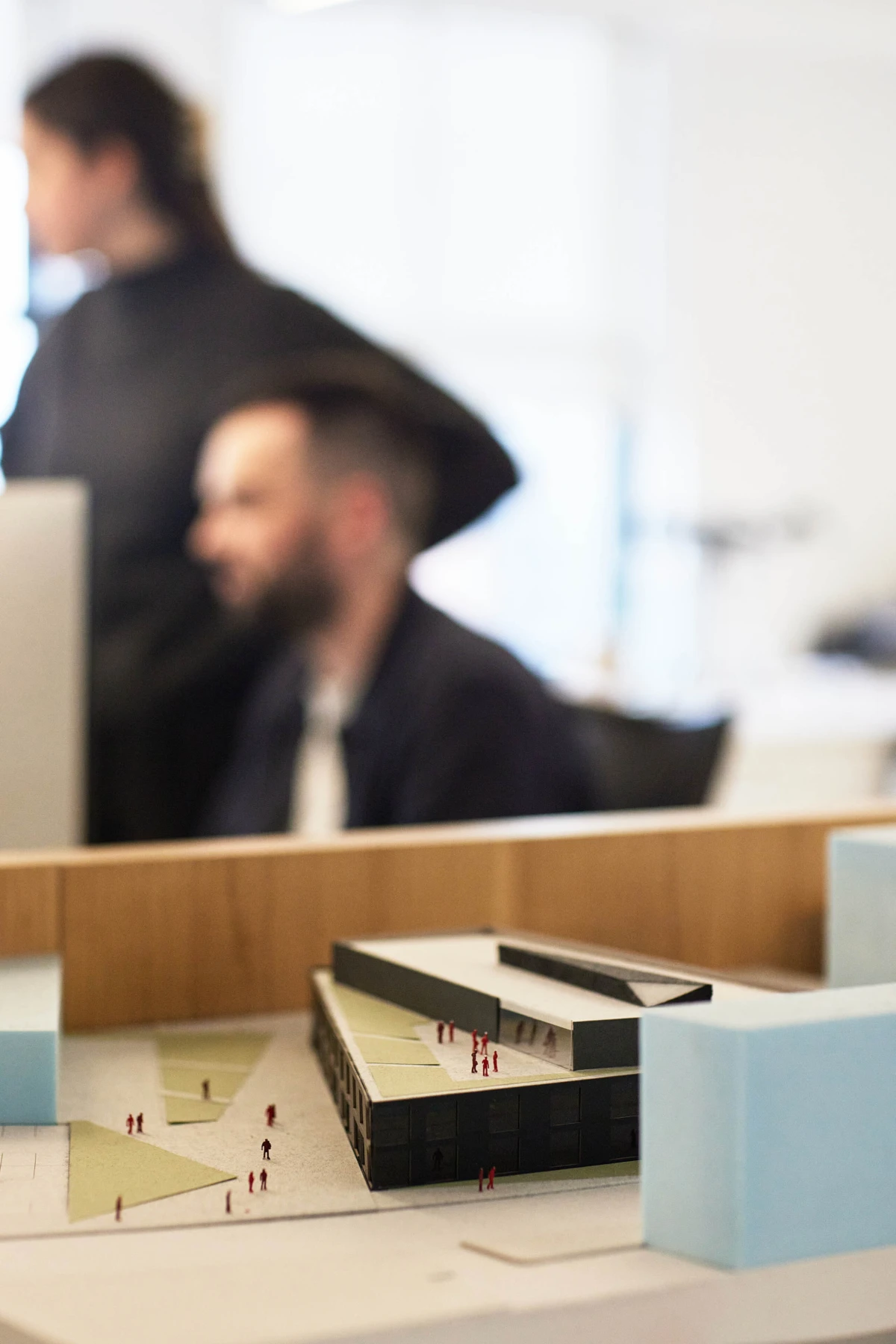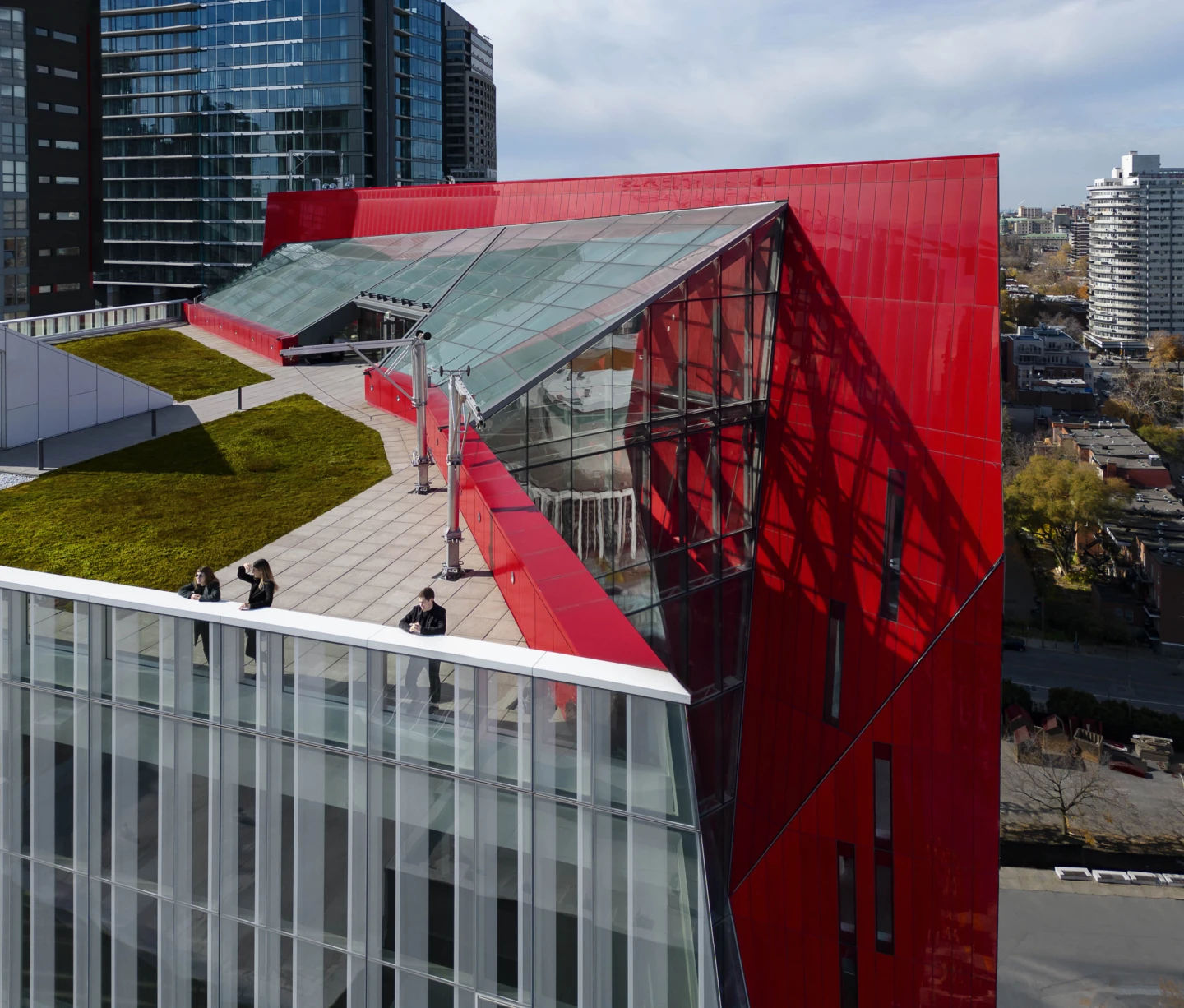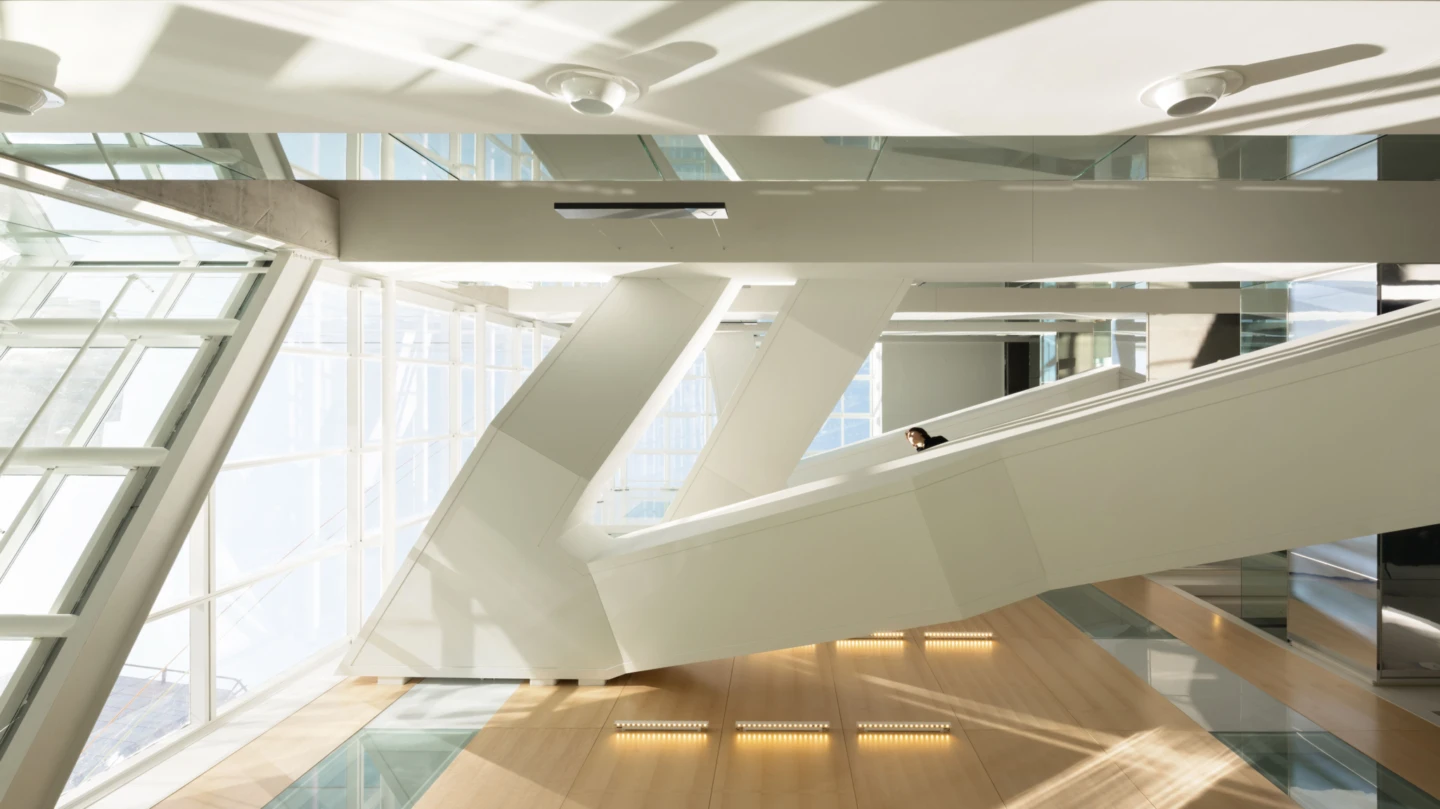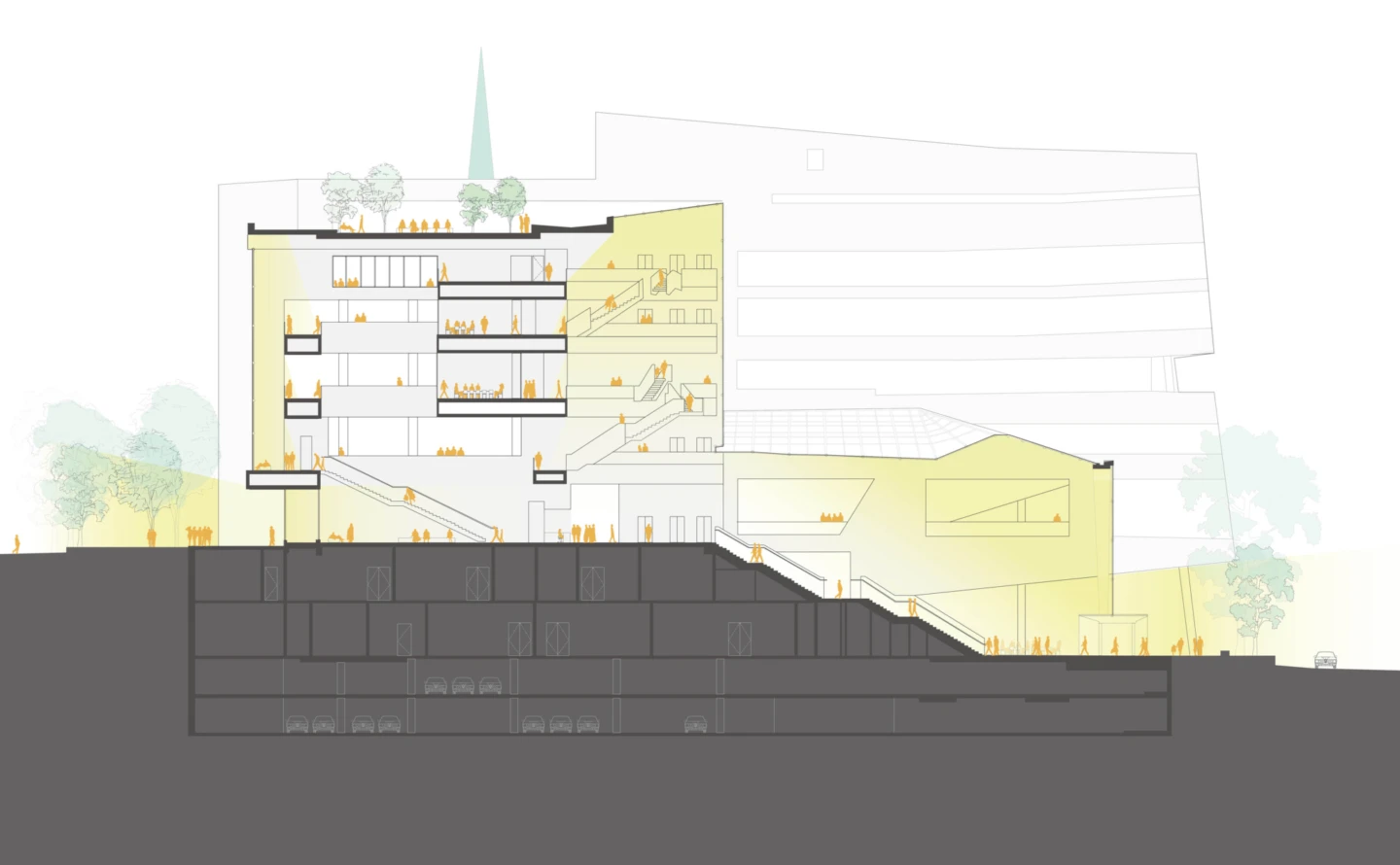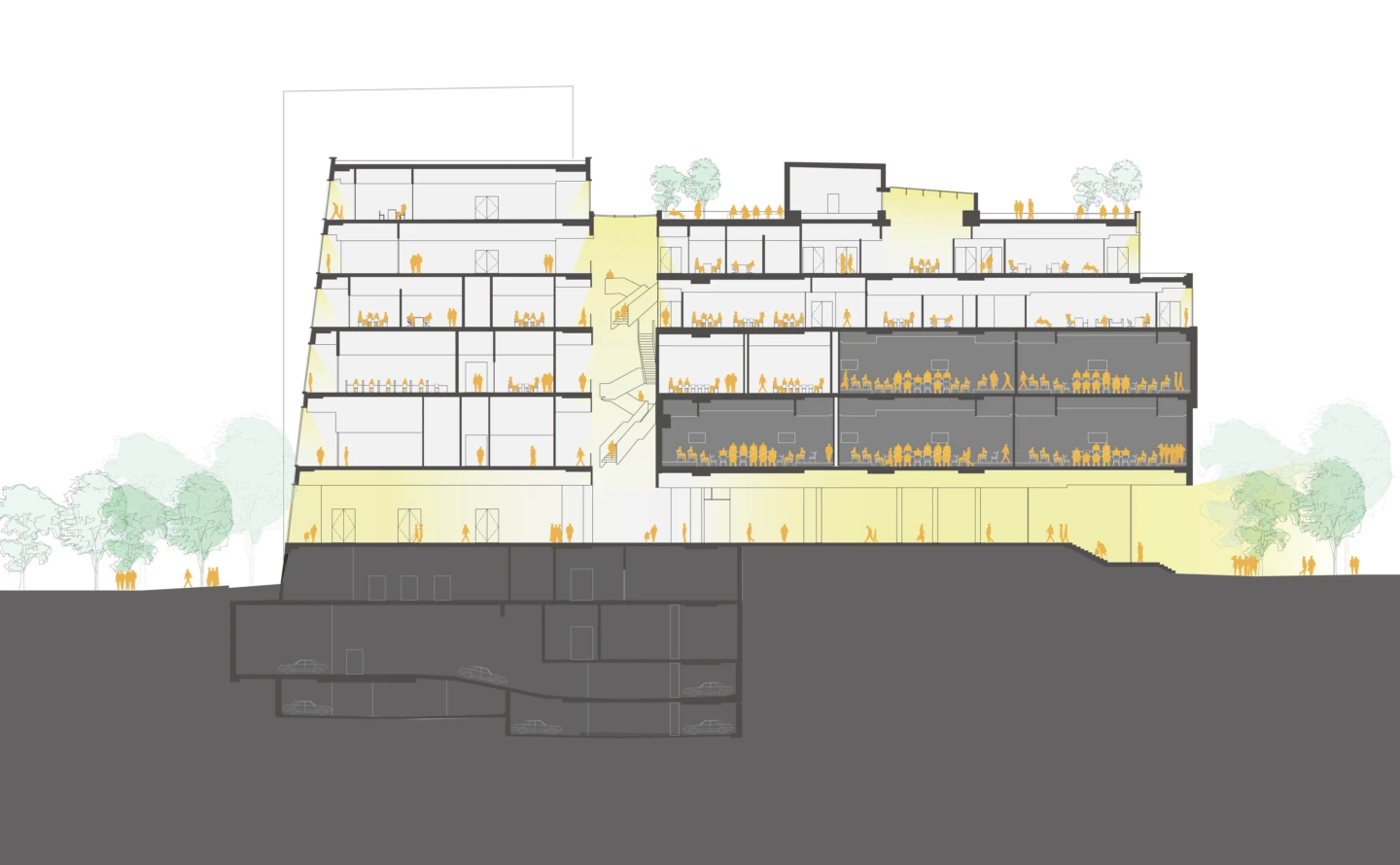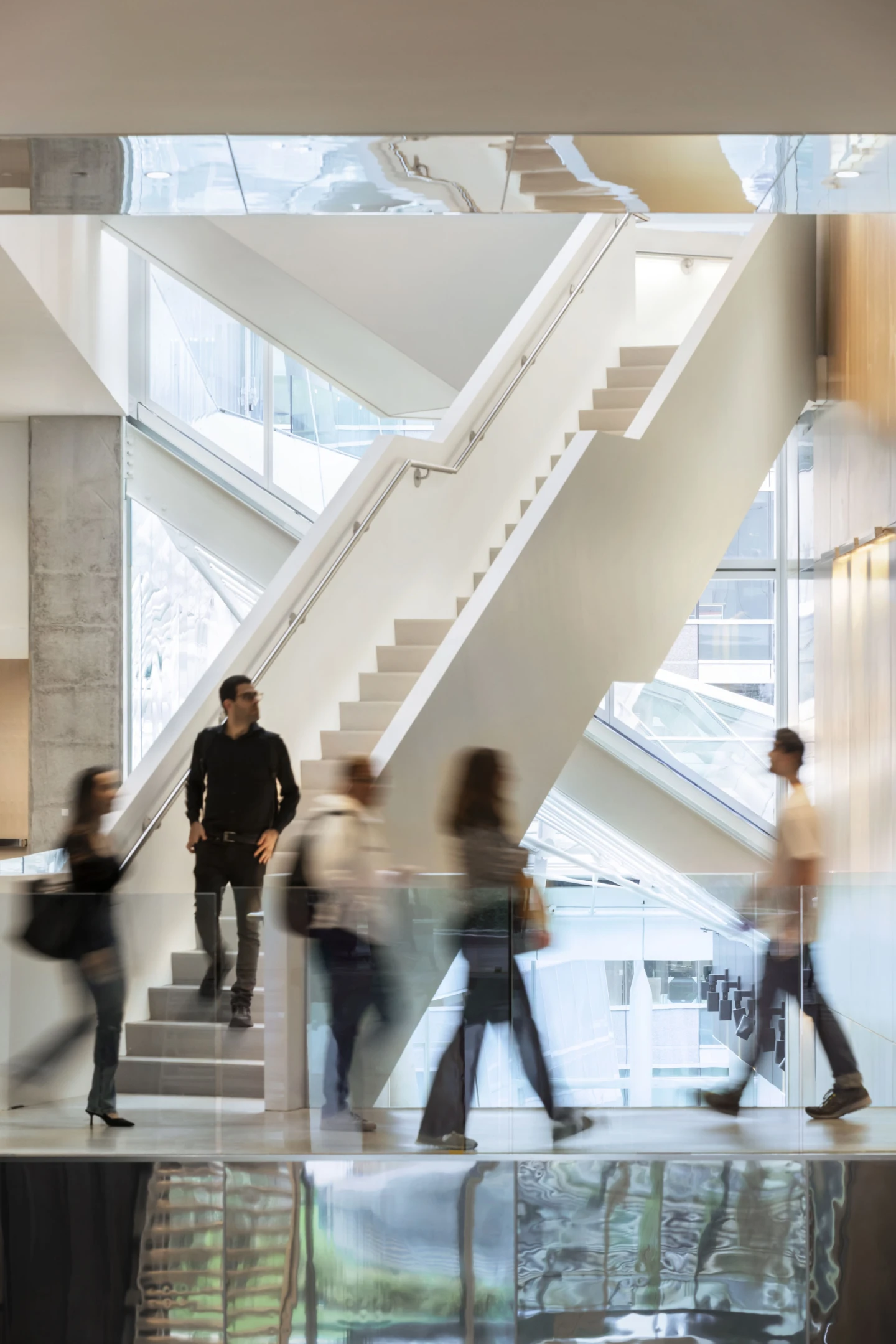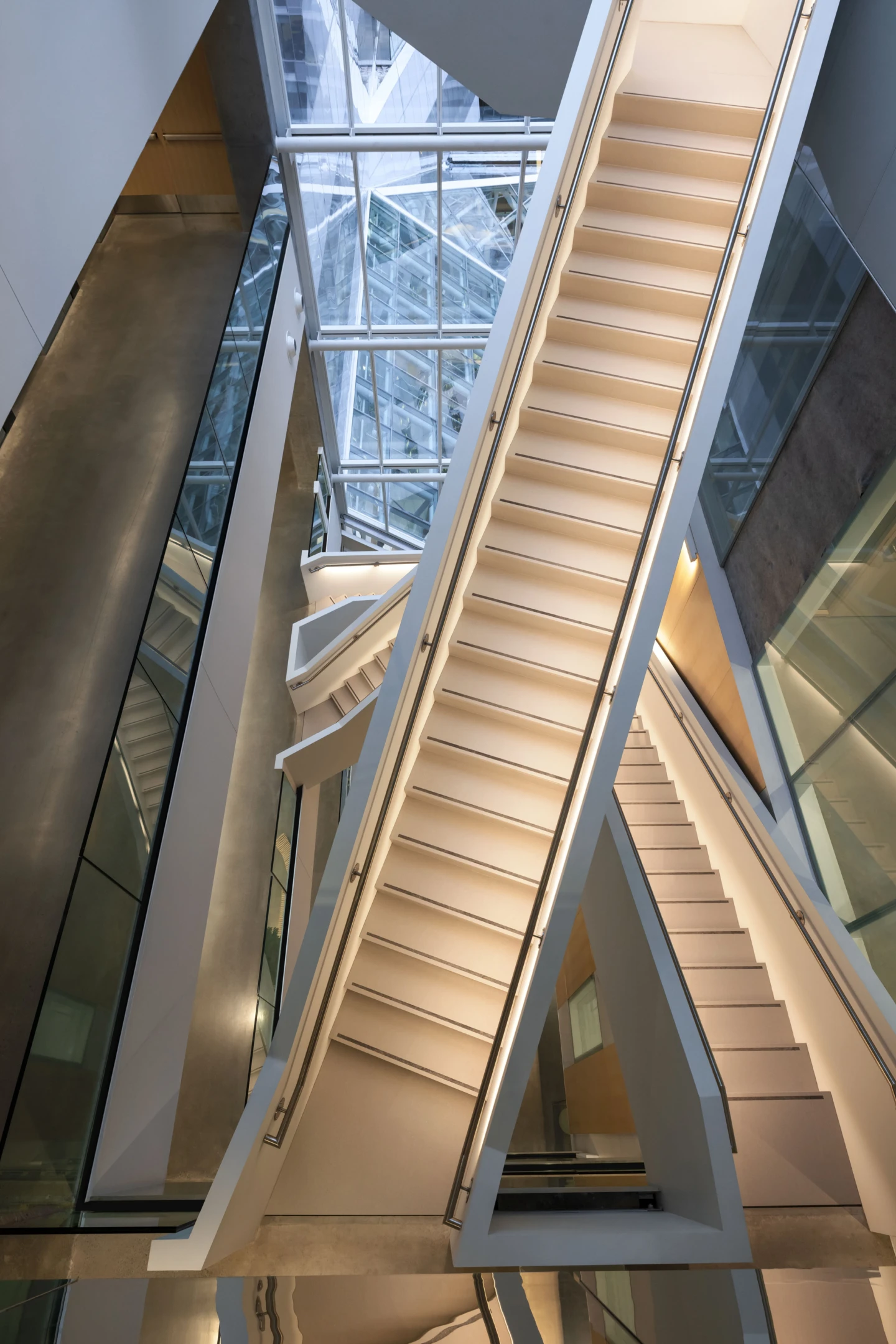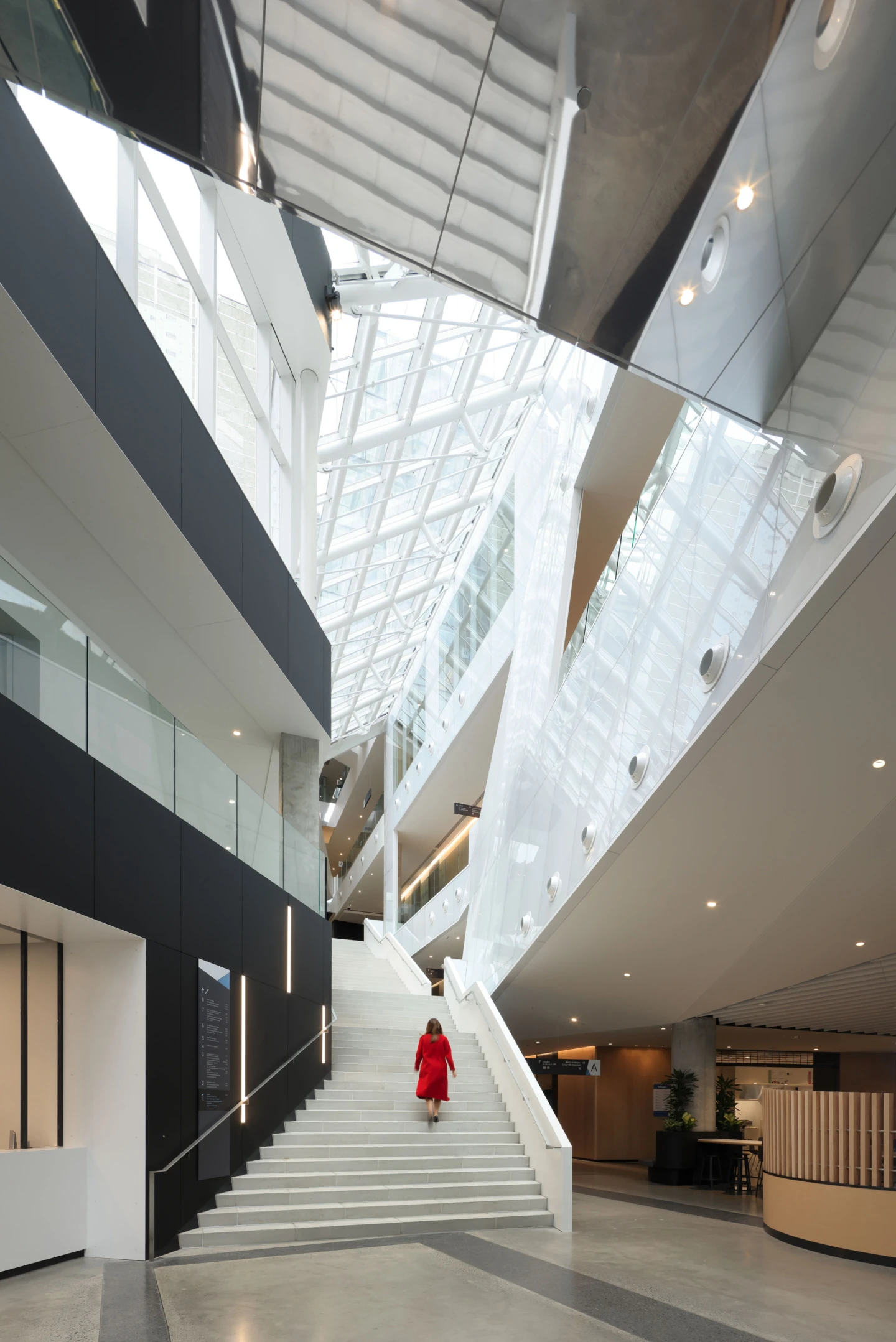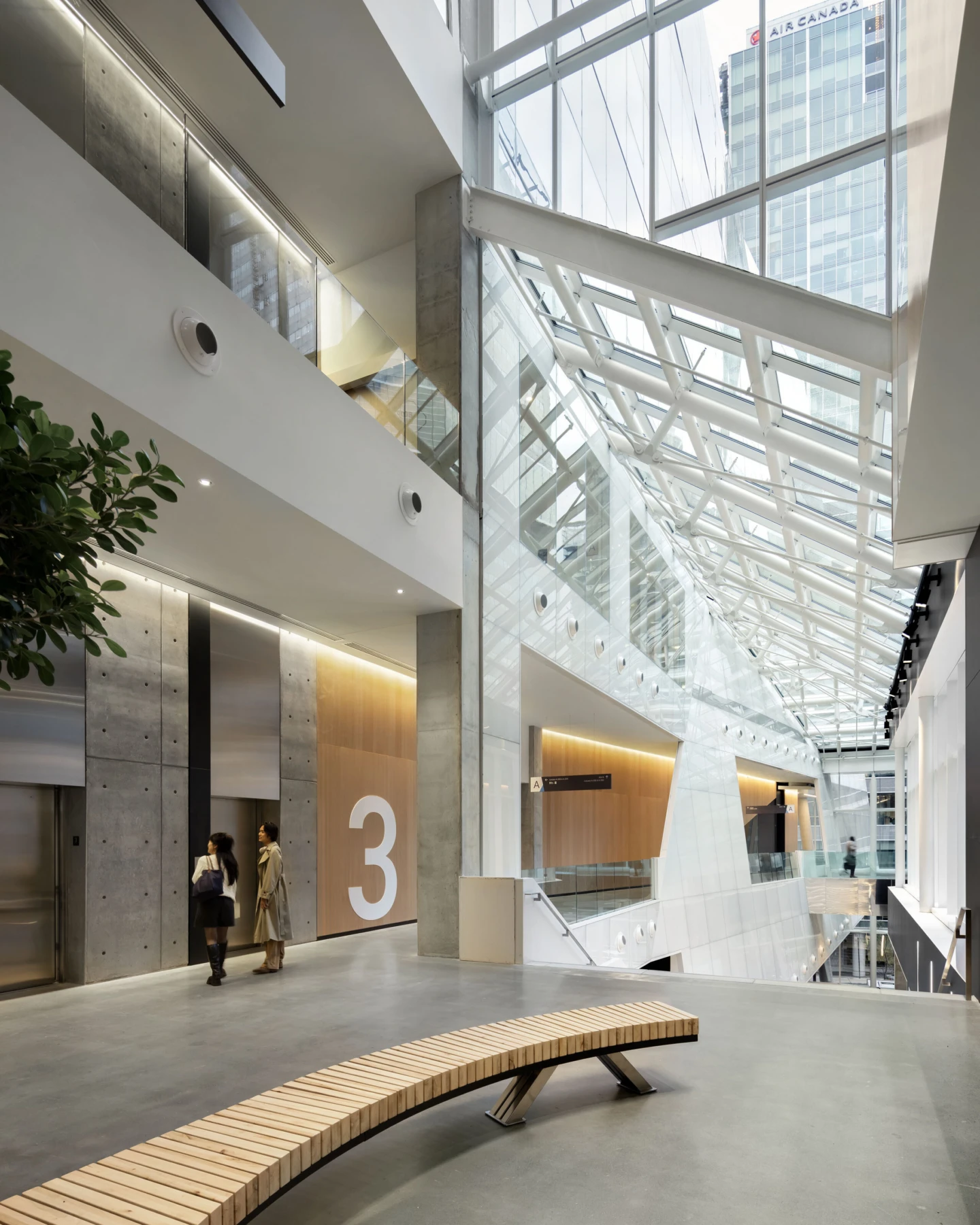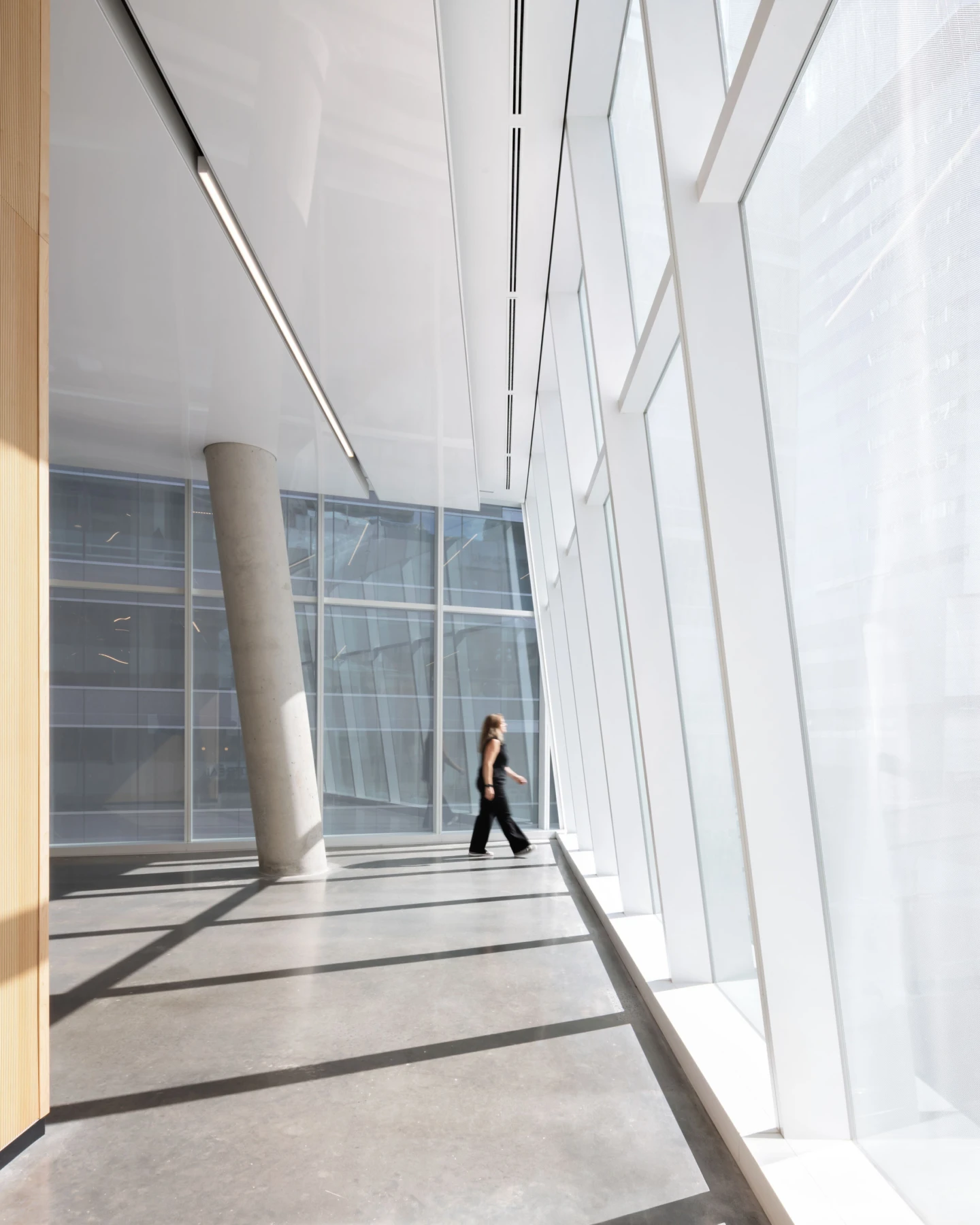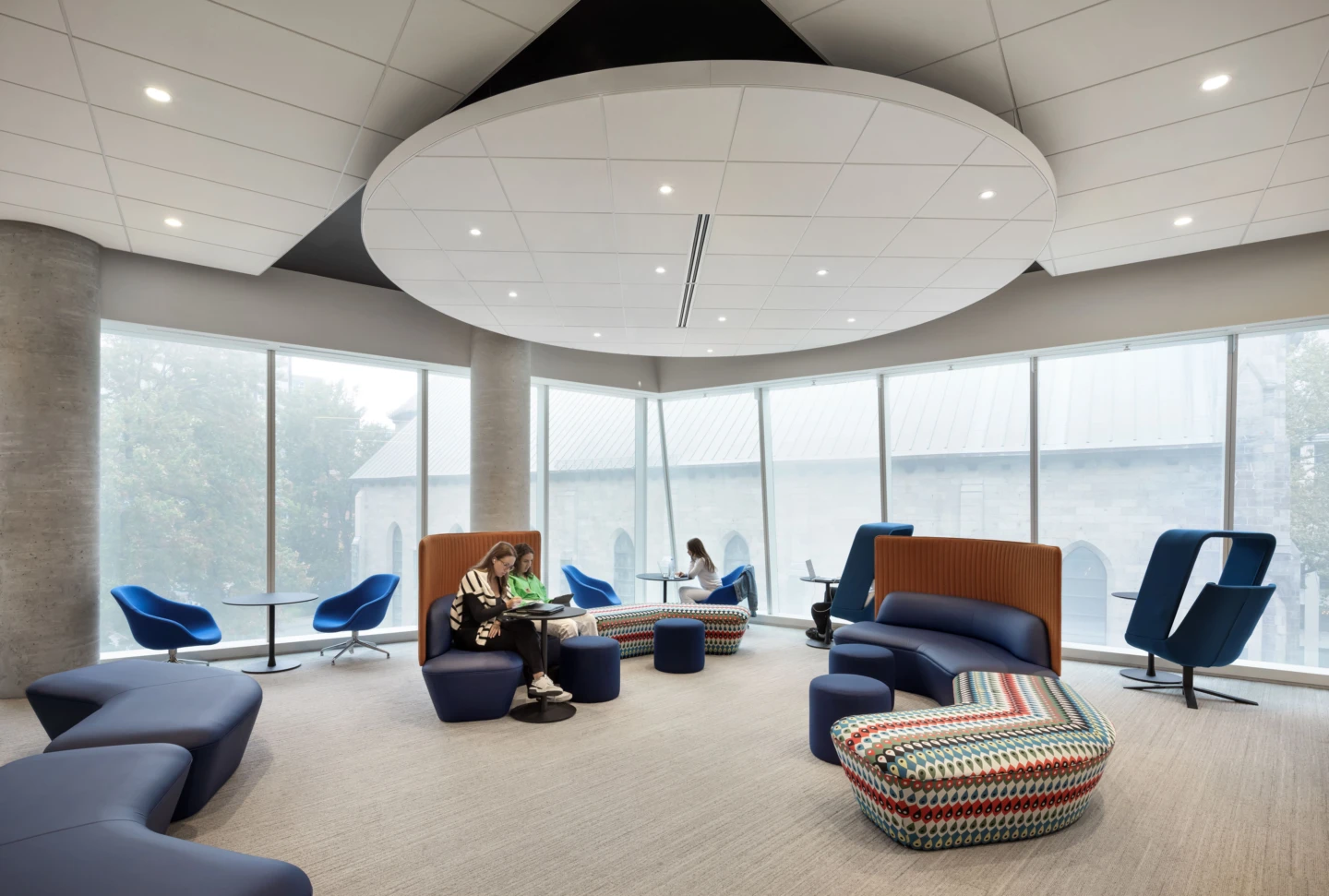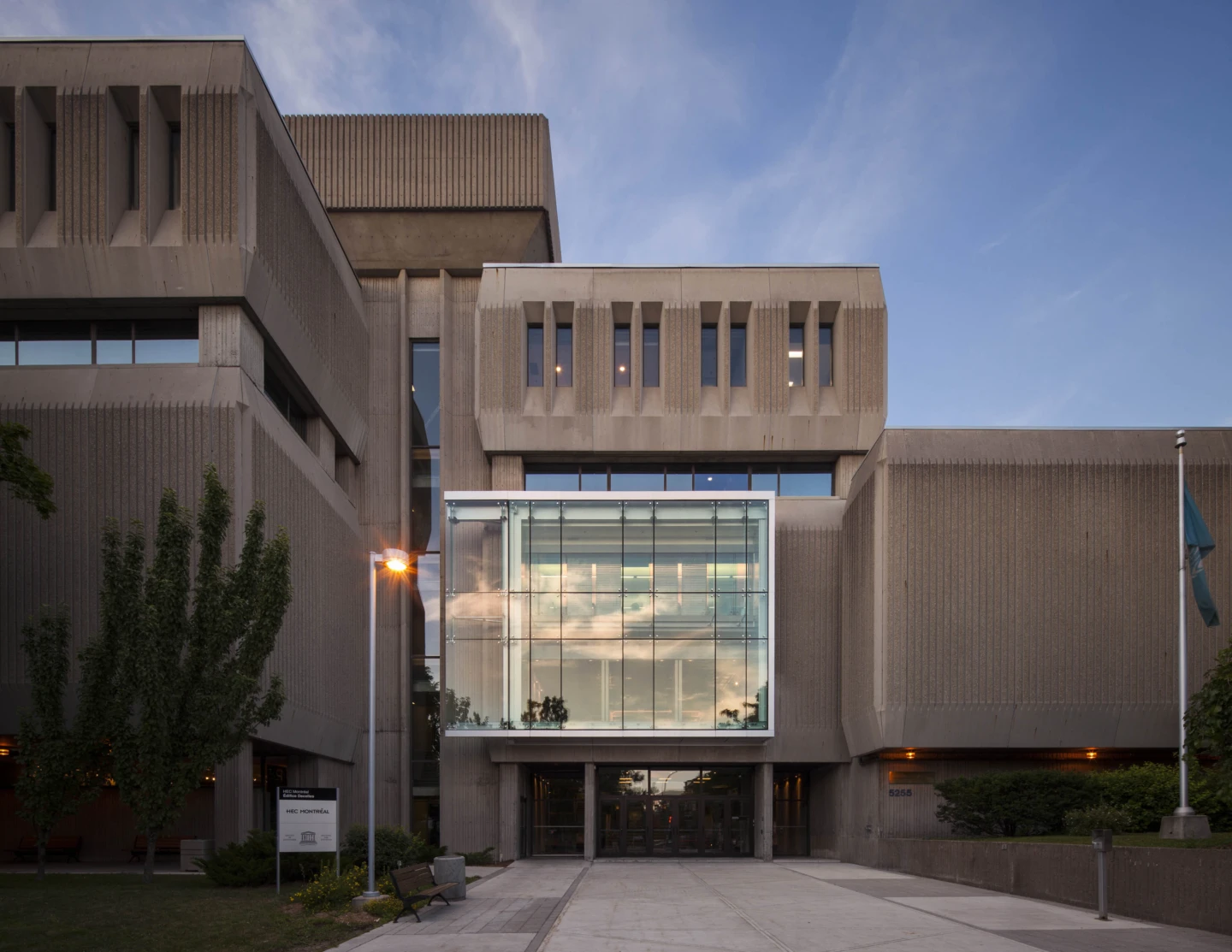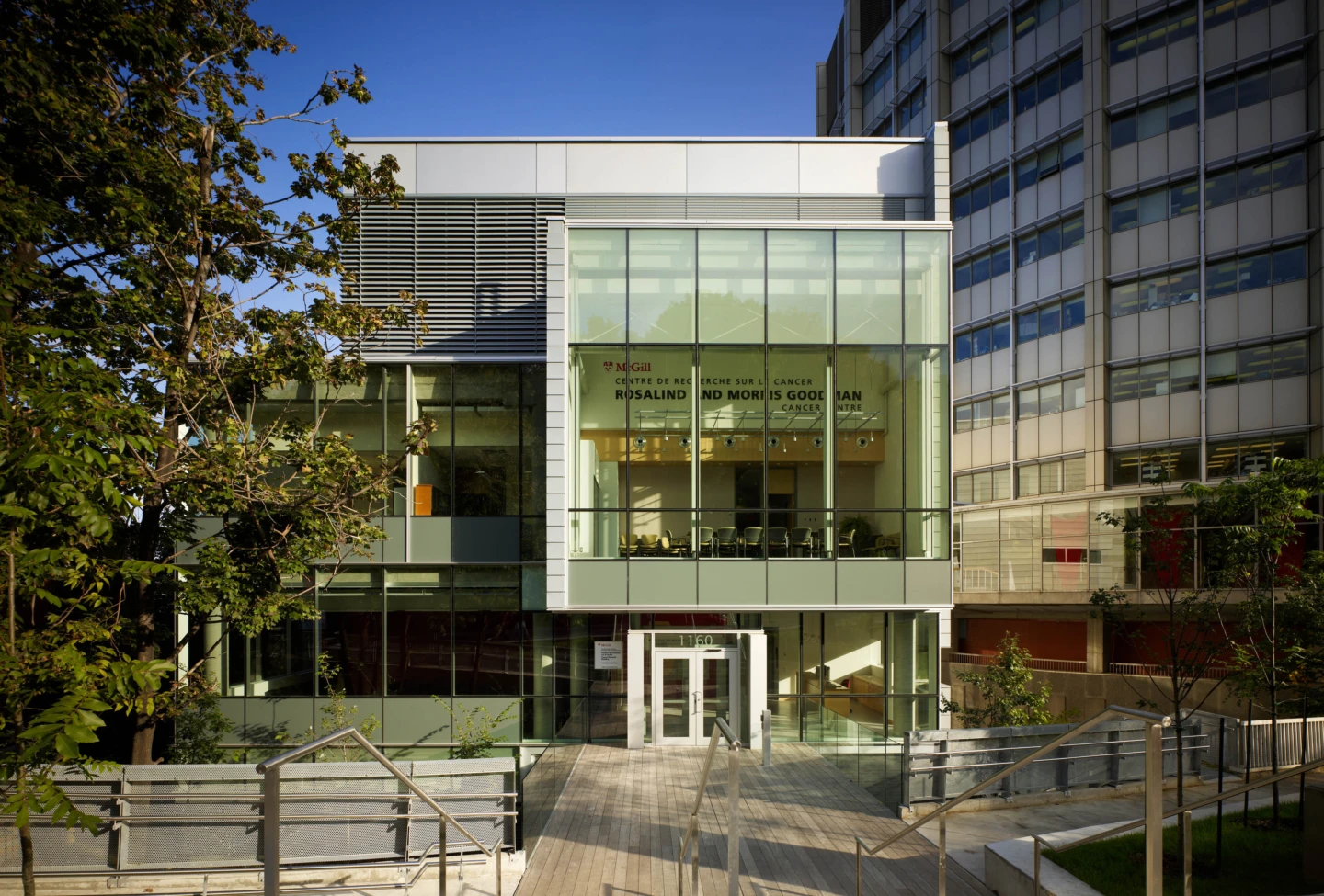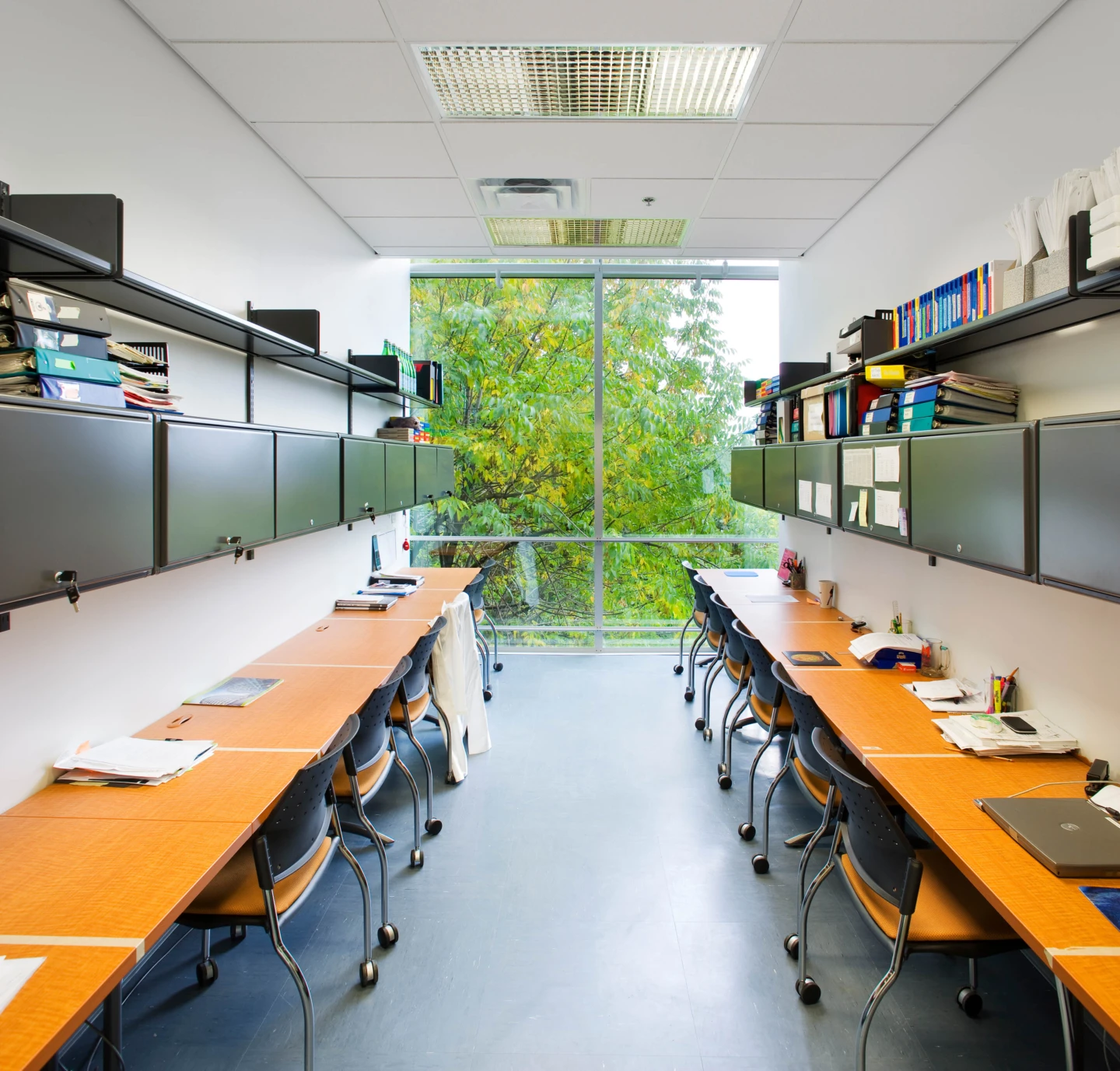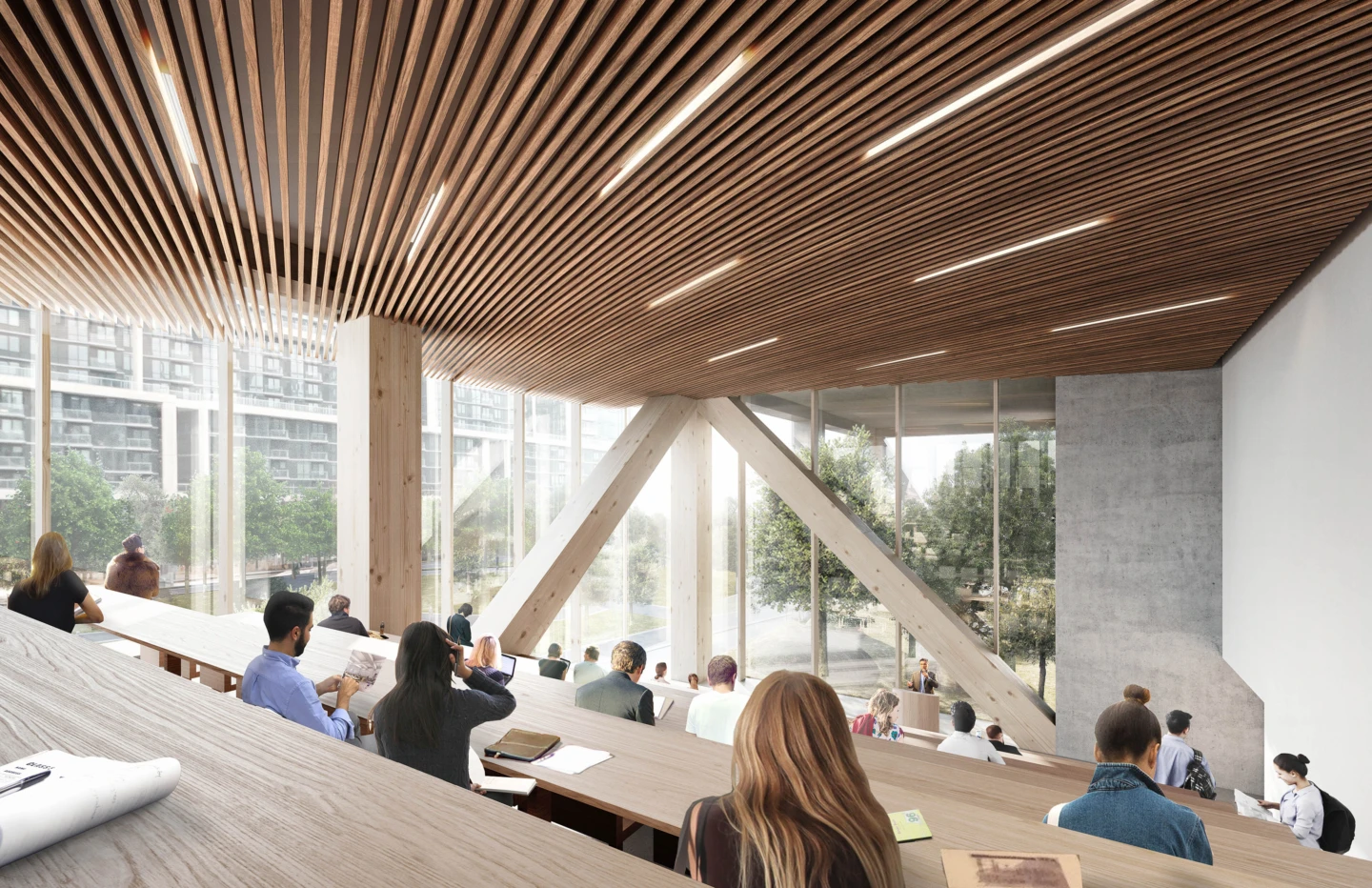- Country Canada
- City Montréal
- Customer HEC Montréal
- Surface area 24 000 m²
- Year 2023
- Certification LEED Gold
What if training the leaders of the future started with immersion in responsible architecture in tune with its surroundings?
Designing a new 24,000m² building in downtown Montréal to expand the horizons of the oldest business and administration School in the country was the challenge undertaken by Provencher_Roy for the Hélène Desmarais Building – HEC Montréal. Having grown significantly over the years and requiring new spaces, HEC Montréal entrusted Provencher_Roy with the design of a new cutting-edge building. The Hélène Desmarais Building is situated in the Ville-Marie borough, between St. Patrick’s Basilica, Beaver Hall Street, and De la Gauchetière Street West. The design therefore represents a return to the source, since HEC Montréal was founded in the Ville-Marie borough in 1907. In over a century, the world has changed significantly. The Business School has evolved, as reflected by its new building.
The resulting design reflects the principles of modernity, functionality, and sustainability that make the institution a leader in the fields of education and research. As a setting for training the decision-makers of tomorrow, the School was devised as an atmosphere of possibilities.
